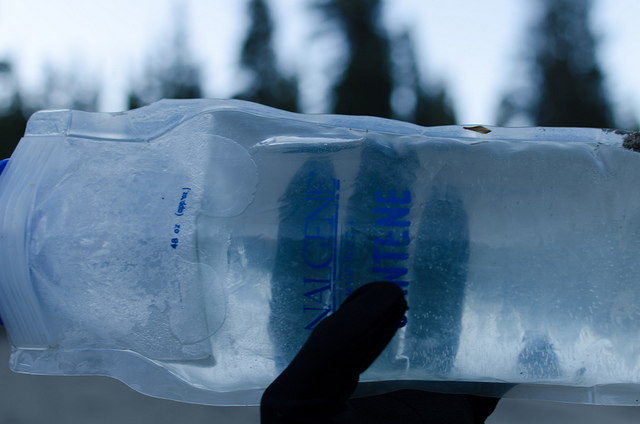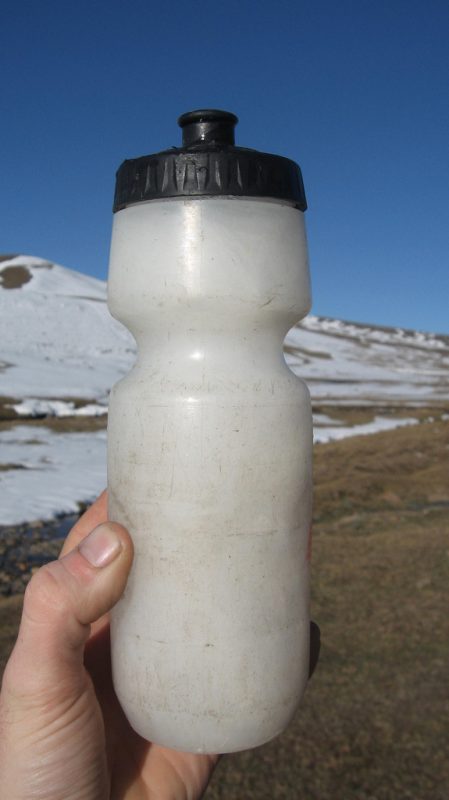Fantastic plastics in cold temperatures
Really cold temperatures have a way of changing things. They make driving conditions dangerous, and cars need to be warmed up for 15 minutes or more before being driven. The possibility of frostbite is always at the back of people’s minds.
While these things occur daily in various parts of the world, at various times of the year, and are well understood, there are some results of cold temperatures that people don’t realize. Take plastic materials, for example. It seems that if they are dropped hard enough in cold temperatures, they will break. Why?

When plastics were first produced, people couldn’t believe that the material could undergo such stress and still not break. Of course, some plastics are more durable than others and some bounce when dropped. Those of us who have cars with plastic bumpers will notice they are pretty tough and hard to crack – most of the time.
According to Professor Greg Rutledge, many plastics are so resistant because of the tendency of the plastic’s long, chain-like molecules to stretch. Because these molecules can stretch so far, they are able to absorb the energy of an impact without breaking.
While most plastics are reliable and the material is one of the most commonly used in modern life, colder areas seem to have more difficulty with them. A plastic bottle at a warmer temperature allows the molecules in the plastic to flex and move. However, once there are colder temperatures involved, the molecules move less. The colder the bottle gets, the more brittle it becomes, and the more likely the plastic will crack or break at some point.
Rutledge explained that it is hard to determine at what temperature a bottle or a particular plastic may break or shatter. Since there are many different kinds and thicknesses of plastic, it would be difficult to document each kind. He said that windows break at 564 degrees Celsius and tire rubber deflates at -72 degrees Celsius. He also explained that there are many items such as toys and food containers that are made with a cheaper, flimsier plastic. This results in them cracking much easier than, say, a soda bottle.

Although plastic is considered a modern material, it was actually invented in the late 1860s. It was invented in order to replace elephant ivory that had been used for various types of containers.
As stated above, plastics are used in everyday situations, but few of us seem to know just how plastics are made. Plastics are created mostly from petroleum and hydrocarbons. Due to the sequencing of the atoms in the plastic, these eventually become a polymer.
From polymerization comes two different types of plastic. One becomes soft when it’s heated and hard when it cools down. The other type is thermosetting, which allows the plastic to be shaped. This latter type is often used in things like toys because they will never soften after being made.
Other materials like hoses and bowls are first made with a resin which is formed using the polymerization method. The resin actually begins as a powder and other materials are added to it. Depending on the product, some of these materials may add color or even texture. Again, it all depends on what type of product is being made, but some additives contribute properties like fire-resistance, electrical conductivity, or extra strength. If the product is intended for use outdoors, an additive can be used to protect the plastic from the detrimental effects of sunlight, thereby reducing the tendency to fade over time.

There are several different ways a product is given its shape. One process is called extrusion, where the plastic is pushed through a die of the desired cross-section. Injection is another process which requires heating the resin until it melts, then putting it into a mold and left there until cooled. Injection is generally used for toys and phones. A third process, known as blow molding, is used by many bottling factories. They fill a little layer of plastic with air. Casting is then used to shape the material, starting out with a mold and then heated until permanently set.
If you have any comments then please drop us a message on our Outdoor Revival Facebook page
If you have a good story to tell or blog let us know about it on our FB page, we’re also happy for article or review submissions, we’d love to hear from you.
We live in a beautiful world, get out there and enjoy it. Outdoor Revival – Reconnecting us all with the Outdoors.





